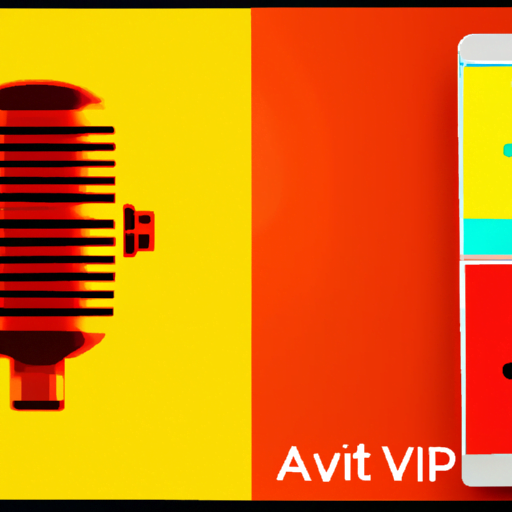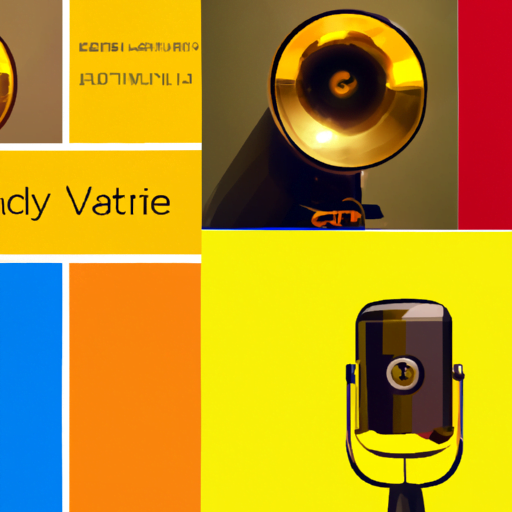
-
Table of Contents
- Innovative UI/UX Design for Voice-Activated Applications
- The Rise of Voice-Activated Applications
- Designing for Voice-Activated Applications
- 1. Conversational Design
- 2. Contextual Understanding
- 3. Feedback and Confirmation
- 4. Error Handling
- 5. Multimodal Interfaces
- Case Studies: Innovative UI/UX Design for Voice-Activated Applications
- 1. Google Assistant
- 2. Duolingo
- Summary
Innovative UI/UX Design for Voice-Activated Applications

In recent years, voice-activated applications have become increasingly popular, revolutionizing the way we interact with technology. From virtual assistants like Siri and Alexa to voice-controlled smart home devices, the use of voice commands has become an integral part of our daily lives. As the demand for voice-activated applications continues to grow, it is crucial for designers to focus on creating innovative user interfaces (UI) and user experiences (UX) that enhance the usability and effectiveness of these applications. In this article, we will explore the key principles and strategies for designing compelling UI/UX for voice-activated applications.
The Rise of Voice-Activated Applications
Voice-activated applications have gained significant traction due to their convenience and accessibility. According to a report by Juniper Research, the number of voice assistants in use is expected to reach 8 billion by 2023. This exponential growth can be attributed to several factors:
- Hands-free Interaction: Voice-activated applications allow users to interact with technology without the need for physical input, making them ideal for situations where hands are occupied or when accessibility is a concern.
- Natural Language Processing: Advances in natural language processing (NLP) have significantly improved the accuracy and understanding of voice commands, making voice-activated applications more reliable and user-friendly.
- Smart Home Integration: The integration of voice assistants with smart home devices has made it easier for users to control various aspects of their homes, such as lighting, temperature, and security, using voice commands.
Designing for Voice-Activated Applications
Designing effective UI/UX for voice-activated applications requires a deep understanding of user behavior, context, and the limitations of voice recognition technology. Here are some key principles and strategies to consider:
1. Conversational Design
Conversational design is at the core of voice-activated applications. Unlike traditional graphical user interfaces (GUI), voice interfaces rely on natural language interactions. Designers should aim to create conversational experiences that mimic human conversations, making the interaction feel more intuitive and engaging.
One way to achieve conversational design is by using a persona for the voice assistant. By giving the assistant a personality and a name, users can develop a sense of familiarity and build a relationship with the application. For example, Amazon’s Alexa has a friendly and helpful persona, which enhances the user experience.
2. Contextual Understanding
Voice-activated applications should be able to understand the context of the user’s commands to provide relevant and accurate responses. Designers should focus on incorporating contextual understanding into the application’s UI/UX design.
For example, if a user asks, “What’s the weather like today?”, the application should be able to determine the user’s location and provide weather information accordingly. By leveraging contextual information, designers can create more personalized and tailored experiences for users.
3. Feedback and Confirmation
Providing feedback and confirmation is crucial in voice-activated applications to ensure that users understand and trust the system’s responses. Designers should incorporate audio and visual cues to indicate that the application is processing the user’s command.
For example, when a user asks a question, the application can respond with a visual indicator, such as a pulsating light or an animated icon, to show that it is listening and processing the command. Additionally, providing verbal confirmation, such as saying “Sure, I can help with that,” can reassure users that their command has been understood.
4. Error Handling
Error handling is an essential aspect of UI/UX design for voice-activated applications. Designers should anticipate and address potential errors or misunderstandings that may occur during voice interactions.
When an error occurs, the application should provide clear and concise error messages that guide users on how to correct their commands. For example, if a user asks a question that the application cannot answer, it can respond with a message like, “I’m sorry, I don’t have the information you’re looking for. Please try asking in a different way.”
5. Multimodal Interfaces
While voice is the primary input for voice-activated applications, incorporating multimodal interfaces can enhance the user experience. Multimodal interfaces combine voice, visuals, and touch to provide a more immersive and interactive experience.
For example, when a user asks for a recipe, the application can display step-by-step instructions on a screen while simultaneously providing audio instructions. This combination of visual and auditory feedback improves comprehension and usability.
Case Studies: Innovative UI/UX Design for Voice-Activated Applications
Let’s explore two case studies that demonstrate innovative UI/UX design for voice-activated applications:
1. Google Assistant
Google Assistant is a widely used voice-activated application that exemplifies effective UI/UX design. It incorporates conversational design by giving the assistant a friendly and helpful persona. The application also leverages contextual understanding to provide personalized responses based on the user’s preferences and location.
Google Assistant provides feedback and confirmation through both visual and audio cues. When the user activates the assistant, the application displays a colorful animation on the screen, indicating that it is listening. Additionally, the assistant responds with verbal confirmation, such as “I’m here, how can I help?”
2. Duolingo
Duolingo, a language learning platform, has successfully integrated voice-activated features into its application. The UI/UX design focuses on providing clear and concise feedback to users during language exercises.
When users speak a phrase or word, Duolingo provides immediate feedback on pronunciation accuracy. The application visually displays a waveform to show the user’s voice input and highlights any errors in real-time. This instant feedback helps users improve their pronunciation and enhances the overall learning experience.
Summary
Designing innovative UI/UX for voice-activated applications requires a deep understanding of user behavior, context, and the limitations of voice recognition technology. By incorporating conversational design, contextual understanding, feedback and confirmation, error handling, and multimodal interfaces, designers can create compelling and user-friendly experiences.
As voice-activated applications continue to evolve, it is essential for designers to stay updated with the latest advancements in voice recognition technology and user preferences. By embracing innovative UI/UX design principles, designers can shape the future of voice-activated applications and provide users with seamless and intuitive interactions.
